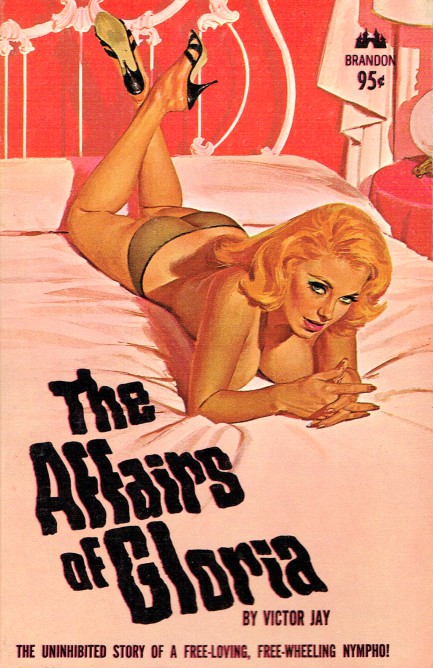| Vintage Pulp | Dec 27 2021 |

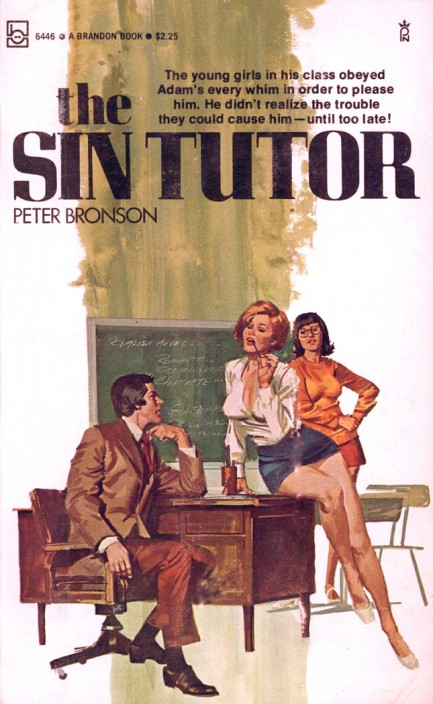
| Vintage Pulp | Feb 5 2019 |

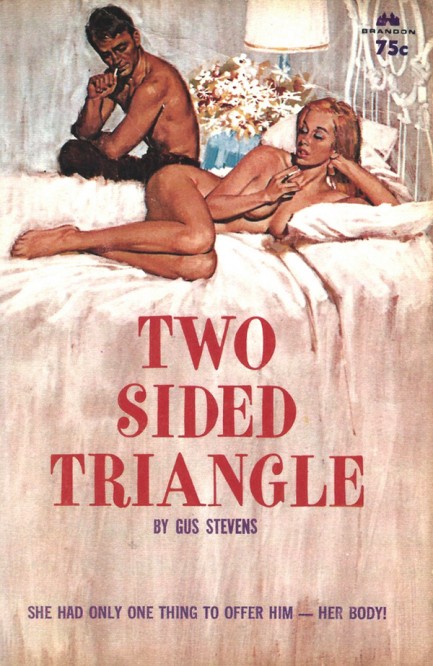
Above, a cover for Two Sided Triangle by Gus Stevens for Brandon House Books, 1965. The company's most beautiful covers were painted by Fred Fixler. Is this a Fixler cover? We don't think so. Brandon House, through its art direction, seemed to make all its illustrators paint like Fixler, but while similar, this doesn't look like him to us. We could be wrong. We could always be wrong. It's happened. More than once. But we like this cover quite a bit, and it amuses us that the male figure seems to be staring directly where the sun don't shine on his female companion, which is probably what we'd be doing under the circumstances too. If you have an idea who painted this, Fixler or otherwise, feel free to drop us a line.
| Vintage Pulp | Feb 1 2019 |

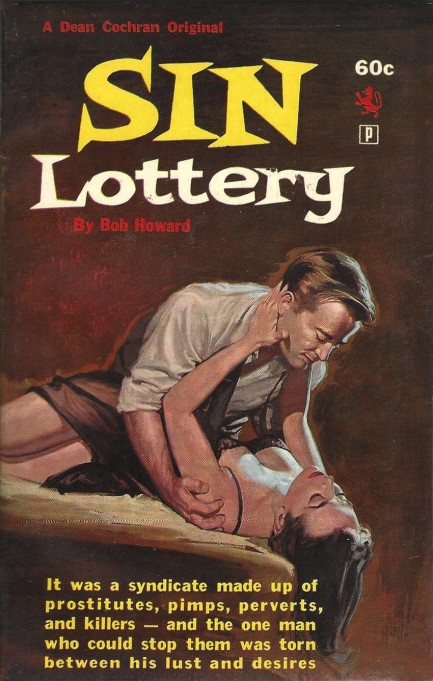
| Vintage Pulp | Jun 19 2018 |

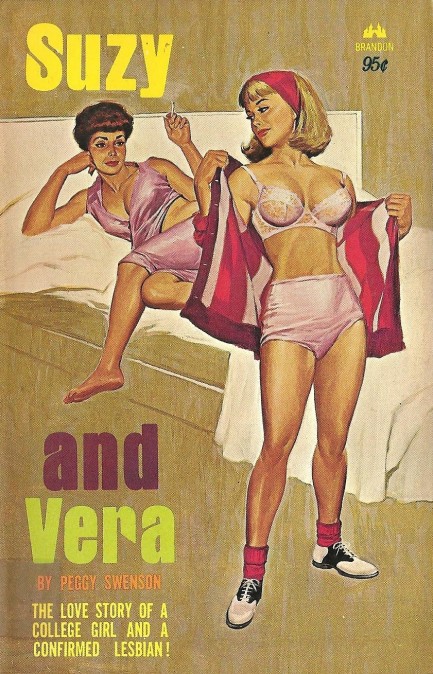
There was a time when her panties probably were considered unbelievably sexy. We're glad that time passed, though with the waistlines in women's fashion creeping back up—harkening to the era when it was illegal to show a navel on television or in movies—will it be long before panties turn into parachutes again? We're on record as hating high waistlines on undergarments. Let's pray to the Roman goddess Clotho that sense prevails before that happens. She isn't technically responsible for clothing, but she does spin the threads that determine the course of people's lives. Presumably that includes fashion designers. 1964's Suzy and Vera comes from author Peggy Swenson, aka Richard Geis, last seen around these parts writing the sleaze classic Lesbian Gym. The same artist painted the covers for both books, looks to us. Some say it's Fred Fixler, but we think it's someone charged by Brandon House with producing work in a similar style. And a nice style it is. But Fixler? We think not. We'll keep researching this.
| Vintage Pulp | Jan 14 2017 |

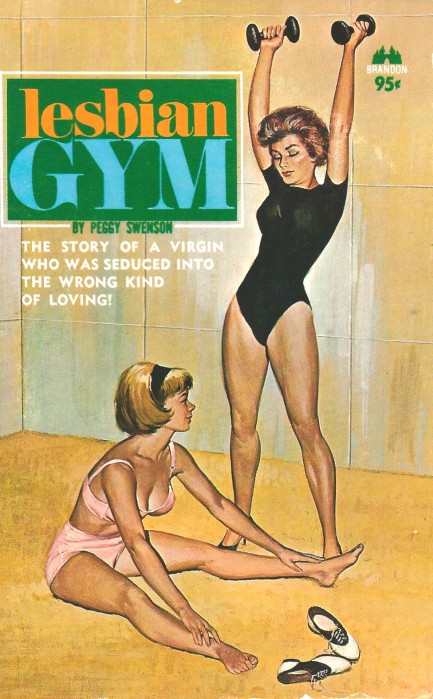
Above, a cover for Lesbian Gym from Brandon House, by Peggy Swenson, aka Richard Geis, copyright 1964. This one caught our eye because the Pulp Intl. girlfriends are always mocking the guys in their gym, whose apelike nature—so they tell us—emerges rather strongly there. We can't comment because we don't go to the gym. We do a bit of heavy lifting at the local bar, though. Good thing we're naturally skinny. A couple of sources attribute this cover to Fred Fixler, but we think they're wrong. Keep this in the uncredited bin.
| Vintage Pulp | Aug 10 2016 |

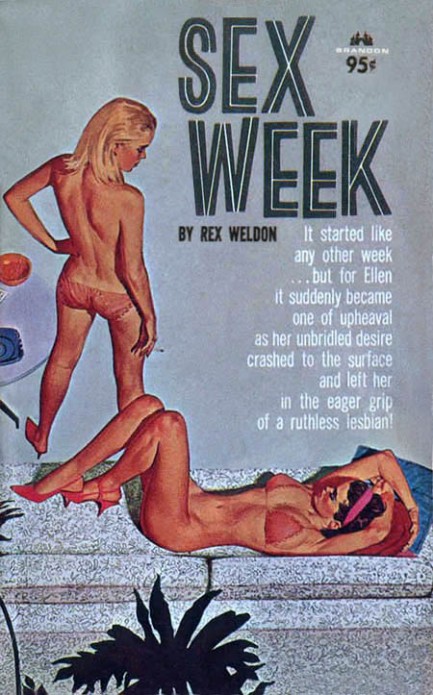
Sex Week is classic lesbian sleaze from publisher Brandon House and author Rex Weldon, aka Duane Weldon Rimel, and it appeared in 1965. Weldon also wrote Party Wife, Bedroom Bingo, Bed Slave, Sweet Sapphic Scene, and other gems of the genre. He may have gotten some of his ideas from his many interesting jobs, including as a liquor store clerk, jazz pianist, hotel worker, and bartender. Thankfully, he found his true calling in sleaze. The artist here is the indispensable Fred Fixler, and you can see much more from him by starting with this link, and you can see our recent large collection of lesbian sleaze here.
| Vintage Pulp | Jul 22 2014 |

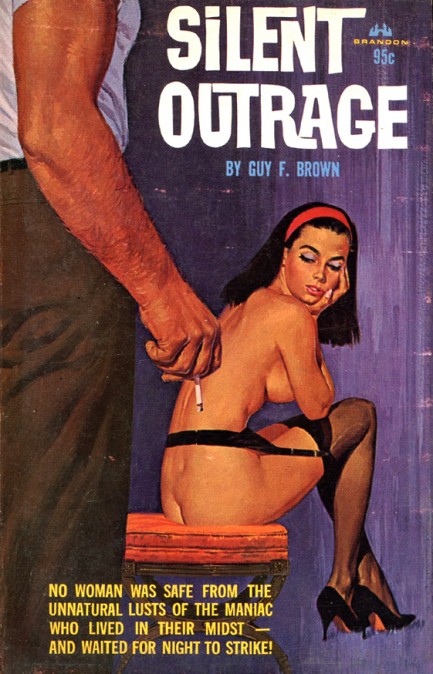
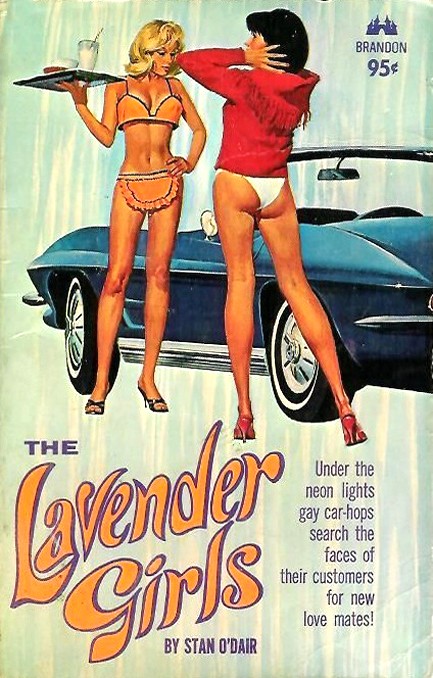
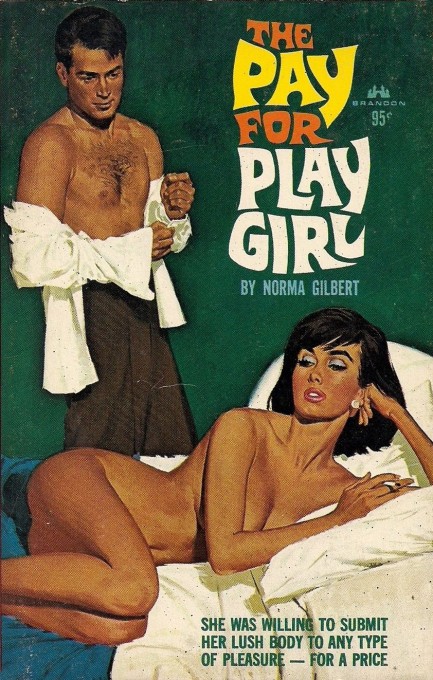
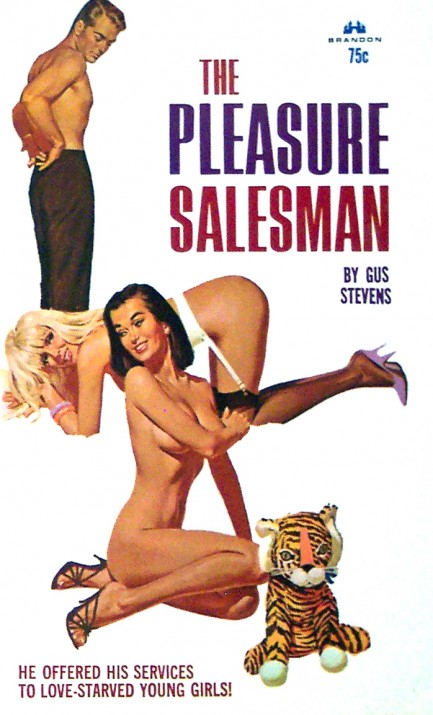
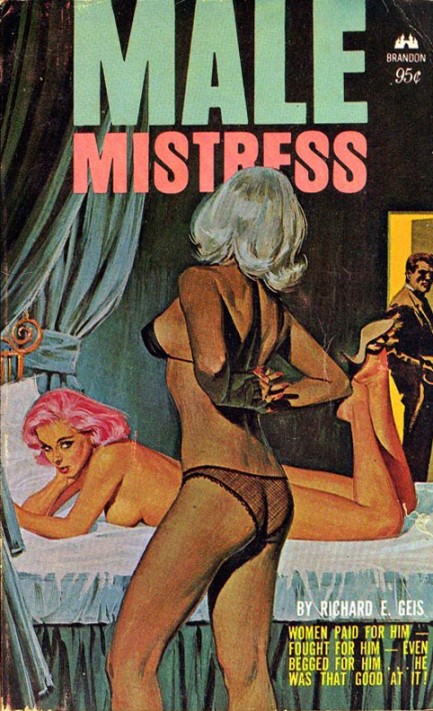
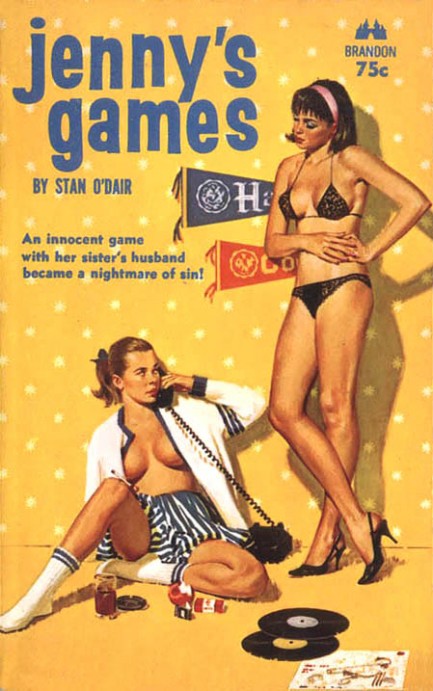
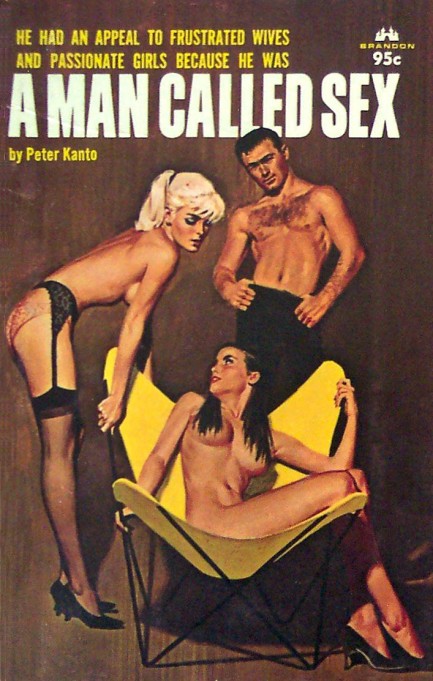
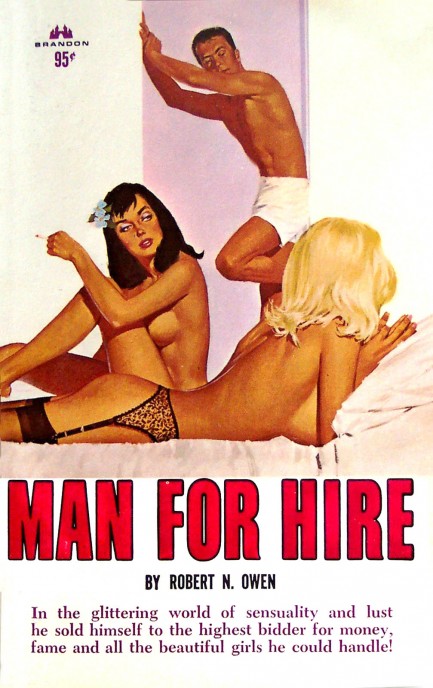
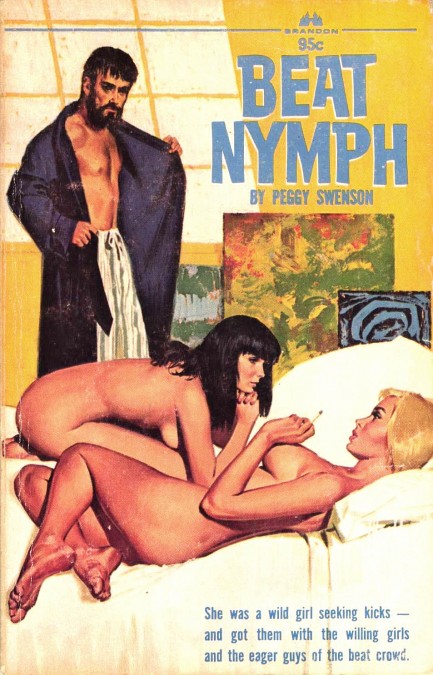
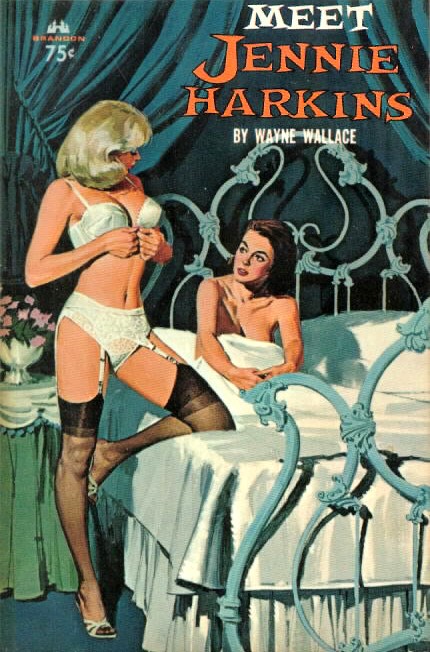
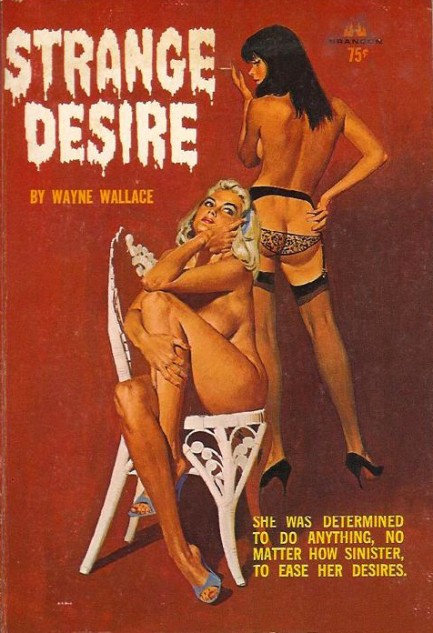
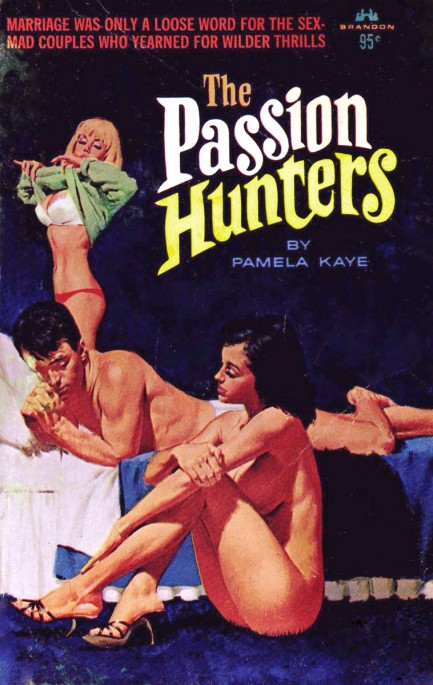
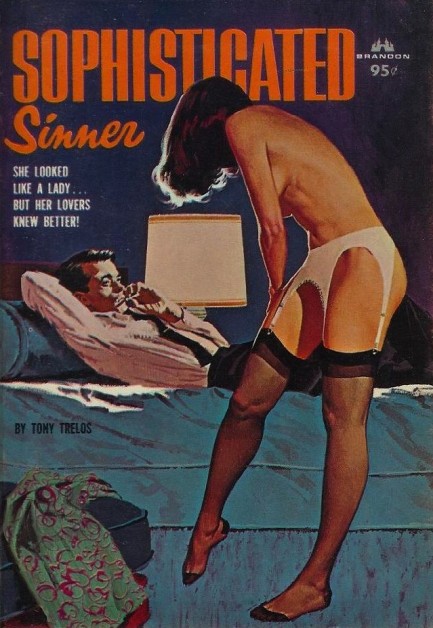
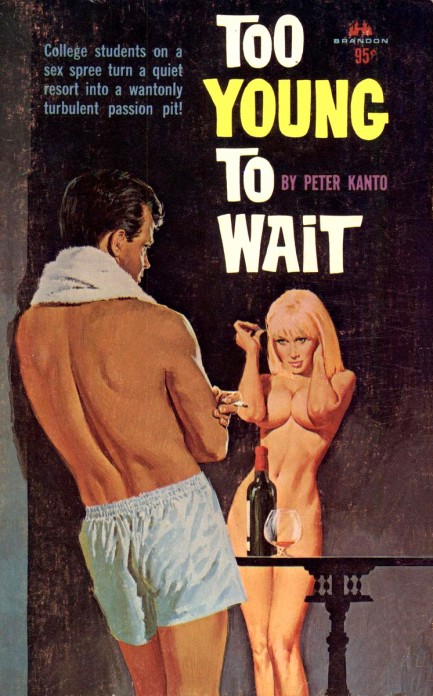
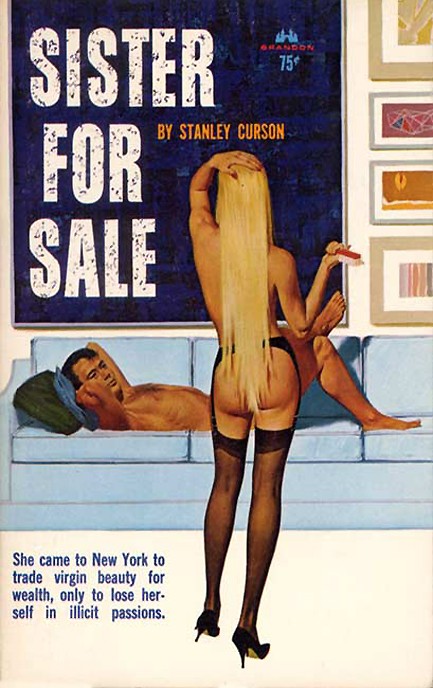
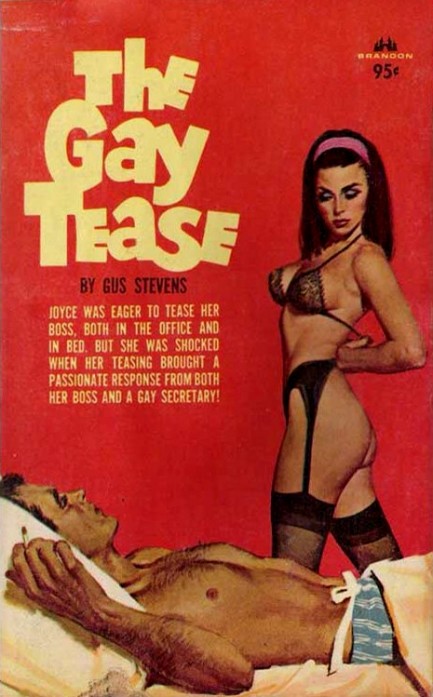
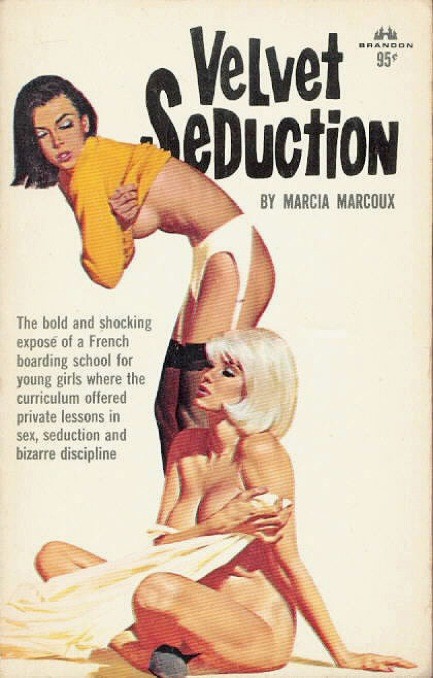
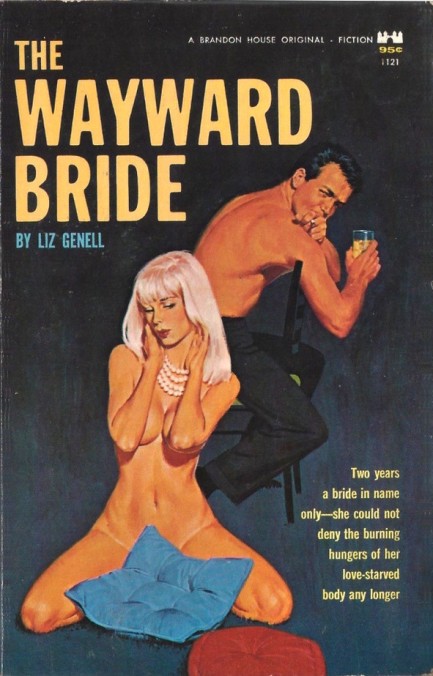
| Vintage Pulp | Oct 5 2011 |

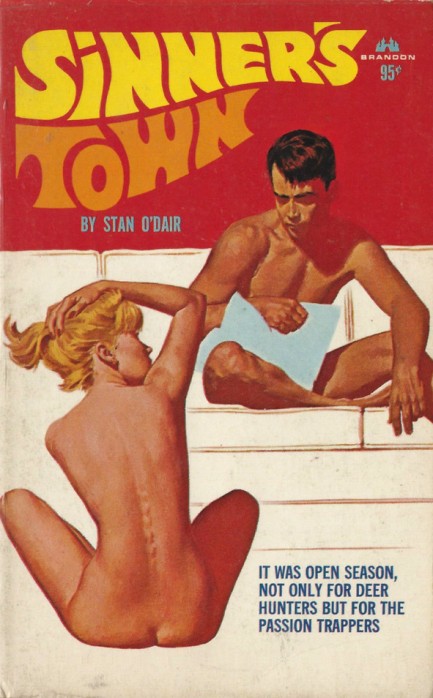
Hungarian-born Fred Fixler’s first career was as a diamond cutter, but by the early 1950s his focus shifted to art, which he studied in both the U.S. and France. He began illustrating paperback covers, and for years was an illustrator for the sleaze publishing imprint Brandon House. During that time his instantly identifiable style resulted in some of the most dynamic paperback covers ever seen on U.S. book racks. The piece above, with its shadowy lovers, is a prime example. Brandon House used Fixler as the primary illustrator for their line of lesbian paperbacks, and because of his talent, these books, which originally sold for around one dollar, go online today for in excess of seventy-five bucks. Fixler also worked in the commercial art field, and taught at schools like the California Art Institute, The Brandes Art Institute, and Parsons School of Design. Below are several more great Fixler pieces that we corralled from around the internet. You can see more of his art by searching online, and learn a lot more about him from his website. 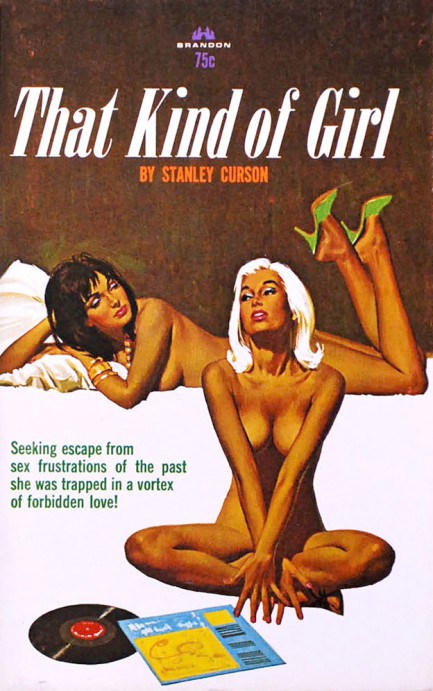
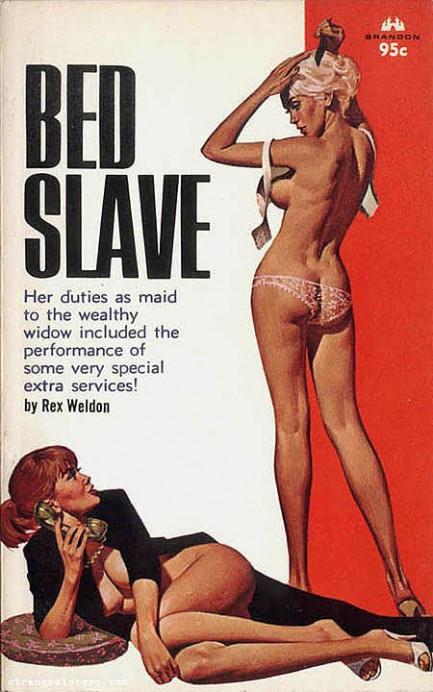
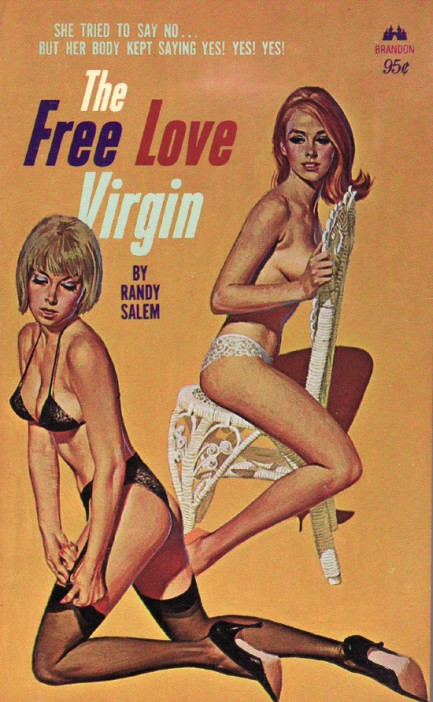
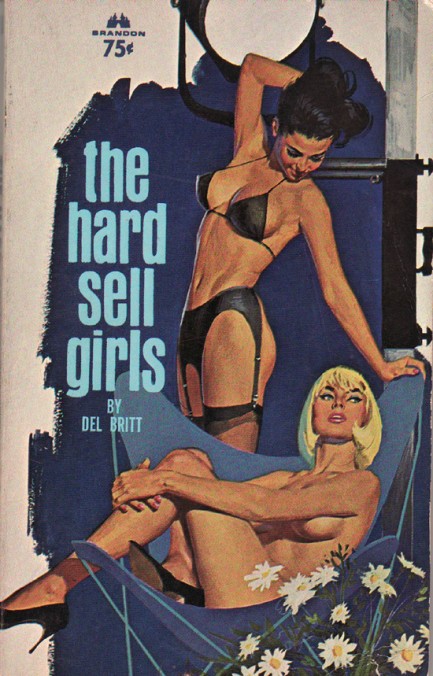
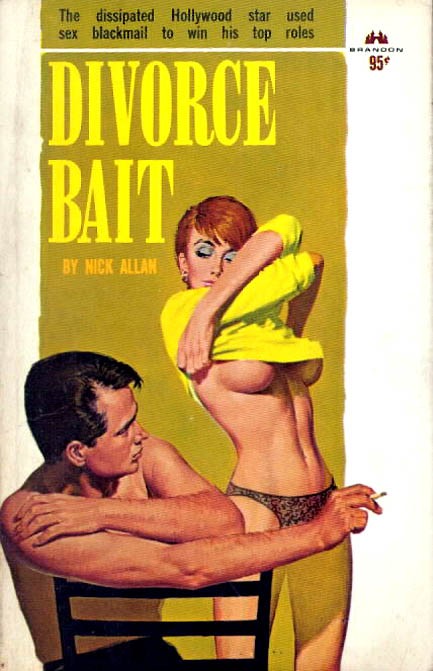
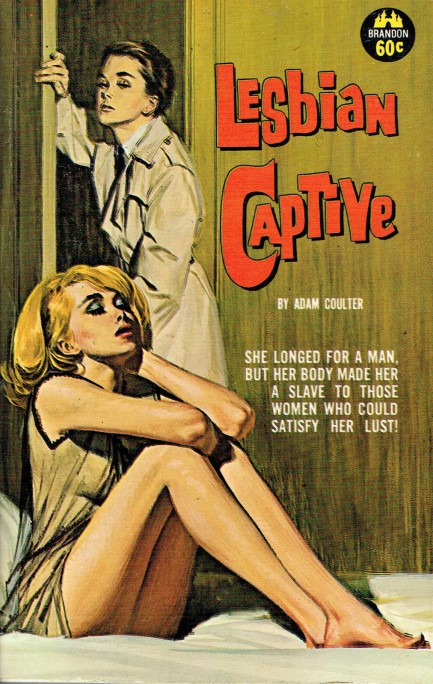
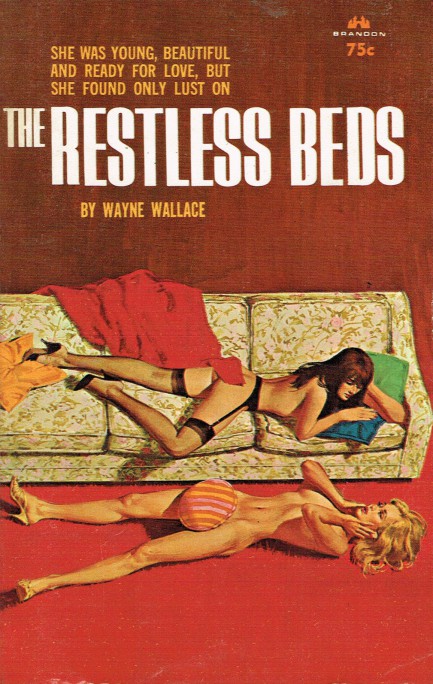
| Vintage Pulp | Jul 12 2011 |

